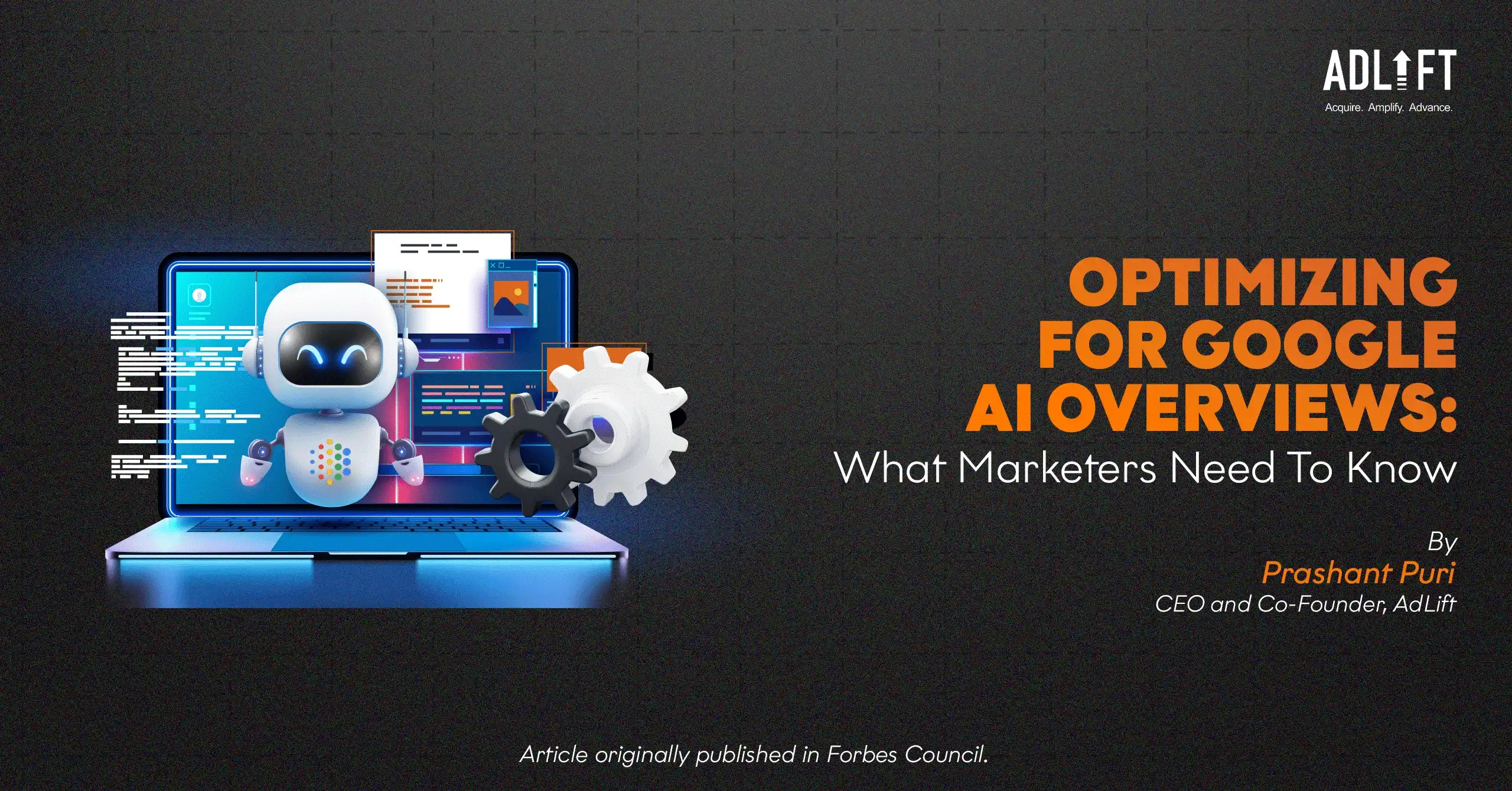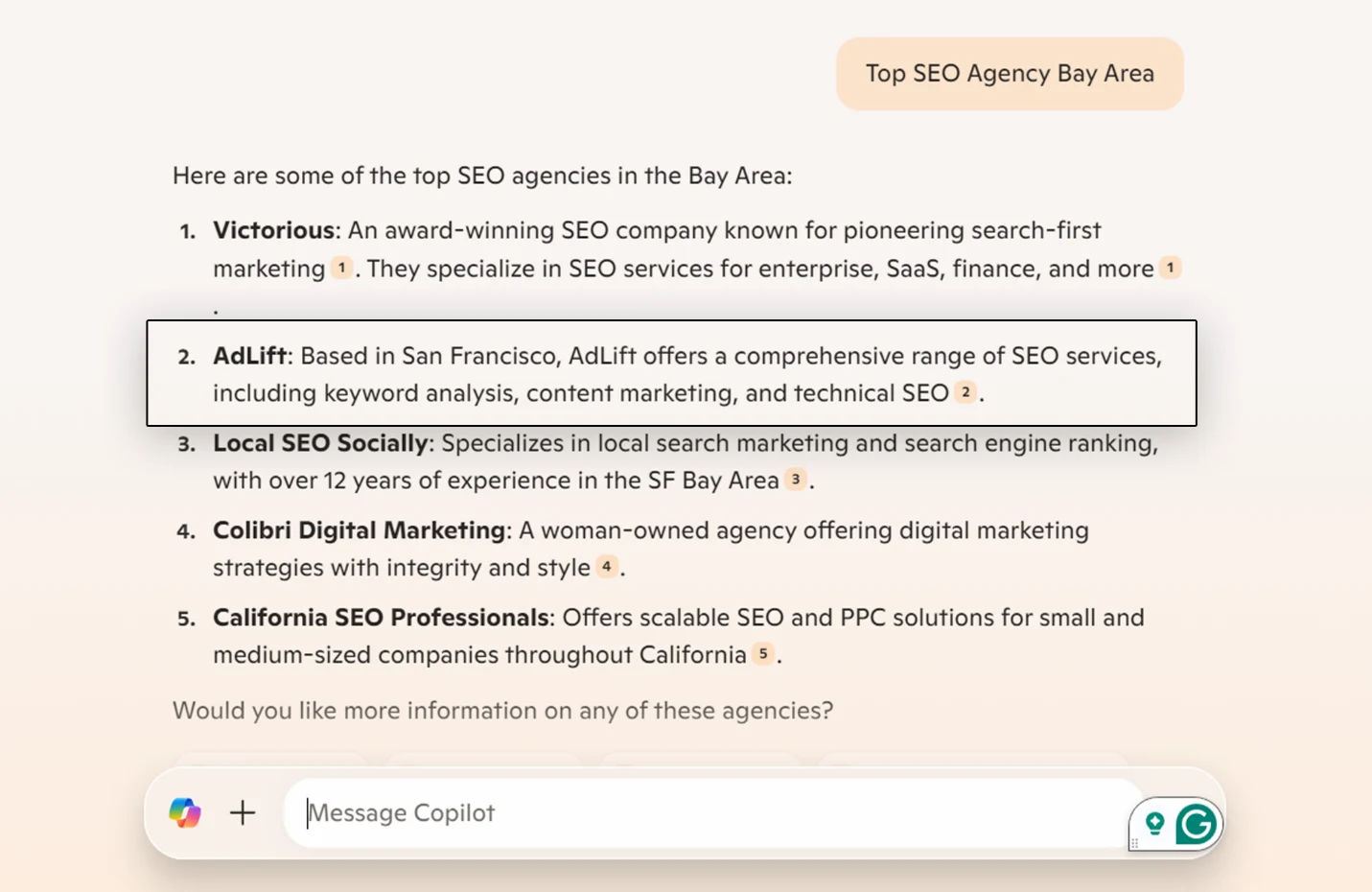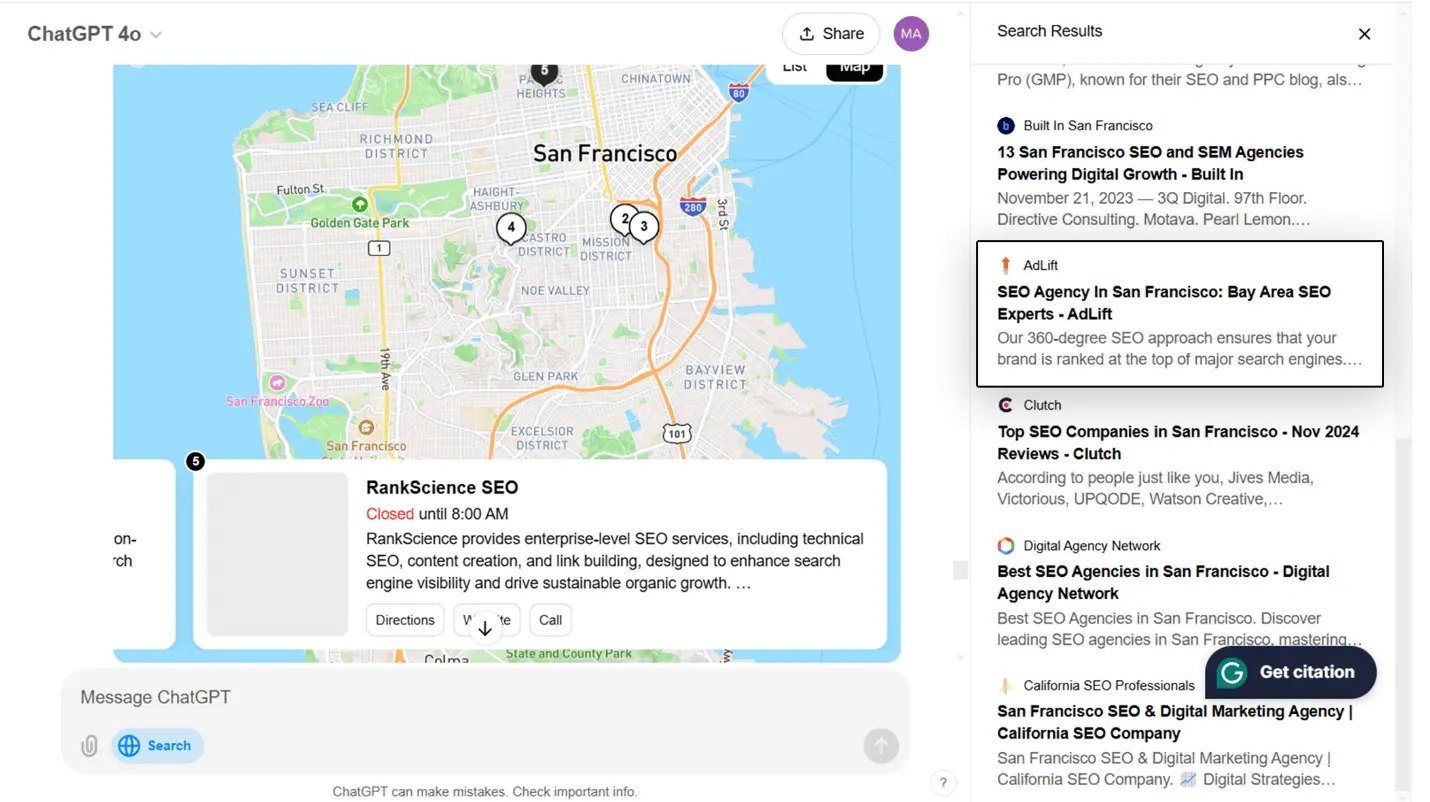Optimizing For Google AI Overviews: What Marketers Need To Know

Prashant Puri, CEO & Co-Founder of AdLift, drives digital transformation with content strategies and data-driven marketing solutions.
It’s now a given that Google loves keeping us on our toes with algorithm updates and constantly revamping search. Google AI Overviews (AIOs) is one such development that represents a significant shift in how search results are presented, giving users quick, AI-generated answers to their queries.
What Are AI Overviews (AIOs)?
AIOs are snapshots generated by Google’s AI that provide quick answers to search queries, displayed above all other search results. These overviews pull information from various sources across the web, presenting users with an amalgamated answer and links to further resources. This development marks a new era and the next big opportunity in search engine optimization (SEO), where the focus shifts from traditional ranking methods to optimizing for AI-generated content.
How Do AIOs Work?
Google’s systems determine when an AIO is relevant, primarily for complex queries requiring multiple searches. Not every query will trigger an AIO; instead, Google selectively displays them for searches where generative AI can offer particularly useful information.
According to an Advanced Web Ranking study, the percentage of keywords with AIO varies across industries. AIOs are more prominent in health, safety and technology industries while less frequent in sectors like e-commerce and real estate. In other words, keywords from the health and safety categories are more likely to prompt AIOs.

Optimizing For LLMs
Google’s blog post announcing AI Overviews notes that links included in AIOs get more clicks compared to a traditional webpage search listing.
How people search for information is evolving with AI-powered large language models (LLMs). If a user starts their search with an LLM, it doesn’t mean the process ends there. The LLM often directs users to other sources, such as Google or a publisher’s site, to provide more detailed information or context.
This means that the next big opportunity in SEO isn’t just optimizing for Google or other search engines—it’s optimizing for LLMs. As these models become the starting point for more searches, the brands and content these LLMs prioritize will get a huge competitive edge.
According to my company’s research, which was conducted by analyzing over 150 websites, the following are factors that influence AIO rankings:
Optimizing For AIOs
Generative Engine Optimization is “a newer concept that optimizes content for visibility in responses generated by AI-driven search engines. It involves strategies like including citations, quotations, and statistics to boost visibility in AI search results.”
Make sure your content/website is optimized for AIOs with the following:
- High-Quality Content (E-E-A-T Factors)
- Keywords Optimization
- Structured Data Markup
- User Experience: Ensure seamless navigation and design to keep visitors engaged and satisfied.
- Engaging Multimedia: Incorporate videos, infographics and images to make content more interactive and appealing to both users and AI systems.
- Backlink Strategy: Build credible backlinks to enhance the authority and visibility of the content in AI search results.
- Social Media Integration: Promote content across social platforms to increase reach and engagement, improving AI visibility.
- User Engagement Metrics: Track engagement signals such as time on page and bounce rates to gauge and improve content performance.
- Internal Linking: Connect related content within your site to help users and AI engines discover more information efficiently.
- Page Load Time: Optimize load speeds to improve user satisfaction and AI rankings.
- Monitoring AI Algorithms: Stay updated with AI search algorithm changes to adjust strategies and maintain optimal visibility.
Bonus Tips
Optimize topics rather than keywords.
Delve deep into understanding search intent and what your audience is looking for. Your content needs to be optimized to address these queries. Your website content needs to be relevant and answer any questions your audience may have.
Maximize visibility with carousels.
For digital marketers and SEOs, the rise of carousel formats in AIO reflects the trend of reduced pixel depth. This allows more products to be displayed within limited screen space, offering vendors greater visibility in search results. Integrating paid and organic strategies becomes increasingly important, ensuring users can quickly discover relevant products.
Optimize for featured snippets and question-based keywords.
Featured snippets and question-based keywords are the strongest indicators for triggering AIOs. In contrast, site links (often tied to brand queries) and local packs strongly correlate negatively with AIOs, as these are usually navigational or transactional searches. Google’s AIOs are designed to help users explore topics further, making them less relevant for direct brand or local searches. This insight is crucial for marketers.
GEO: A Case Study
We proactively optimize our clients’ websites for AIO results, significantly improving visibility and traffic. One of our clients, an online community college in Sacramento, California, achieved prominent visibility in AIOs thanks to our targeted optimization efforts, which boosted brand visibility and cemented them as a reliable information hub. Here’s what we did:
Tailored Content & Keywords:We researched and targeted keywords relevant to student needs (i.e., flexible learning, career advancement, affordable education), attracting qualified traffic.
Implemented Rich Schema:We implemented key schema markups (Review, Faculty, Organization, Programs) to provide search engines with richer context about the college’s offerings and faculty expertise.
Meticulous Technical SEO:Monthly GSC audits ensured a smooth website performance, identifying and resolving technical issues for optimal search engine crawling and user experience.
Tracked Data-Driven Keywords:We implemented ongoing monitoring of keyword rankings, prioritizing optimization efforts for high-performing terms to maximize organic visibility.
Acquired High-Authority Backlinks:We strategically built high-quality backlinks, increasing its domain authority and search engine trust.
AdLift we’re our own best-case study
We optimized our website to appear in AIO, the results speak for themselves.
Google AIO Results:
Article originally published in Forbes Council:






